Temple Maze Runner

Overview of Temple Maze Runner
Temple Maze Runner has quickly become one of India's most downloaded mobile games, combining fast-paced action with rich cultural elements from our ancient temple heritage. This thrilling adventure takes players through intricately designed mazes inside historic temples, where they must run, jump, and solve quick puzzles to escape with sacred artifacts.
Launched in 2021 by Daman Games, Temple Maze Runner has captured the imagination of millions across India with its unique blend of heart-pounding gameplay and authentic representation of our temple architecture and mythology. Unlike many foreign maze games that simply use Indian imagery as decoration, this game is built around the actual layout and symbolism of real Indian temples.
What makes Temple Maze Runner stand out is how it introduces players to the complexity and beauty of traditional temple design. The mazes aren't just random labyrinths – they're based on the actual layout principles of Hindu temples, with their concentric circles representing the journey from the material world to the divine inner sanctum.
Players take on the role of a young explorer who must retrieve stolen artifacts from different temple mazes across India. Each temple has its own unique layout, traps, and guardians, inspired by regional traditions. As players progress, they learn interesting facts about each temple's history and significance, making the game both entertaining and educational.
Key Statistics of Temple Maze Runner in India 📊
One of the reasons for Temple Maze Runner's massive popularity in India is its accessibility. The game is easy to learn but challenging to master, making it suitable for players of all ages from 8 to 80. Many families in India enjoy playing it together, with children competing to beat their parents' high scores on their favorite temple mazes.
The game's success can also be attributed to its respect for regional diversity. Temple Maze Runner features temples from all corners of India, from the snow-capped shrines of the Himalayas to the ancient stone temples of South India. Each region's mazes have distinct characteristics based on local architectural styles and mythological stories.
Schools across India have even started using Temple Maze Runner as a fun way to teach children about different states' cultural heritage. The game's "Explore Mode" allows players to navigate temples at their own pace, learning about each feature without the time pressure of the main game. This educational aspect has made it popular with parents who want their children to learn while playing.
As players run through Temple Maze Runner's intricately designed mazes, they encounter various obstacles and power-ups inspired by Indian mythology. Collecting a Ganesha idol might grant invincibility to overcome obstacles, while a Saraswati amulet could slow down time to solve a tricky puzzle section. These elements not only add excitement to the gameplay but also introduce players to important deities and their attributes.
The game's popularity has led to some interesting real-world effects. Many players have reported visiting actual temples after playing Temple Maze Runner, eager to see the real-life counterparts of their favorite in-game mazes. This has helped boost tourism at several heritage sites, creating a unique connection between digital entertainment and cultural preservation.
With regular updates adding new temples and features, Temple Maze Runner continues to grow in popularity across India. Its combination of fast-paced gameplay, educational content, and respect for Indian culture has made it more than just a game – it's a celebration of our rich temple heritage in a format that appeals to modern audiences.
Gameplay of Temple Maze Runner

Temple Maze Runner combines fast-paced running gameplay with maze navigation and puzzle-solving elements to create an exciting experience that keeps players coming back for more. The core mechanics involve navigating complex temple layouts while avoiding traps, collecting artifacts, and escaping before time runs out or guards catch you.
What makes the gameplay unique is how it incorporates authentic temple architecture into the maze design. Each turn, corridor, and chamber is based on traditional temple layouts, giving players a sense of exploring real historical sites while enjoying the thrill of the chase.
Core Game Mechanics 🏃♂️
Temple Maze Runner features several interconnected systems that create a dynamic and engaging gameplay experience:
• Maze Navigation: Players must quickly navigate through complex temple mazes using intuitive swipe controls – swipe left/right to turn, up to jump, down to slide under obstacles. The mazes change slightly with each playthrough, keeping the challenge fresh.
• Obstacle Avoidance: Each temple features unique traps inspired by ancient temple security measures – rolling stone balls, collapsing floors, arrow traps, and moving walls. Timing and quick reflexes are essential to survive.
• Artifact Collection: Scattered throughout each maze are sacred artifacts and coins. Collecting these unlocks new characters, power-ups, and temple levels. Rare artifacts provide interesting historical facts about the temple when collected.
• Power-Ups: Mythology-based power-ups appear randomly in mazes – Hanuman's speed boost, Ganesha's obstacle destruction, Lakshmi's magnet for collecting coins, and more. These provide temporary advantages to help navigate particularly challenging sections.
• Guardian Chases: Each temple has mythological guardians that pursue players when they collect the main artifact. These intense chase sequences require quick thinking and knowledge of the maze layout to escape successfully.
Temple Mazes and Locations 🏛️
One of the most appealing aspects of Temple Maze Runner is its diverse range of temple locations, each with unique maze designs based on real Indian temples. Each temple offers distinct challenges and visual styles:
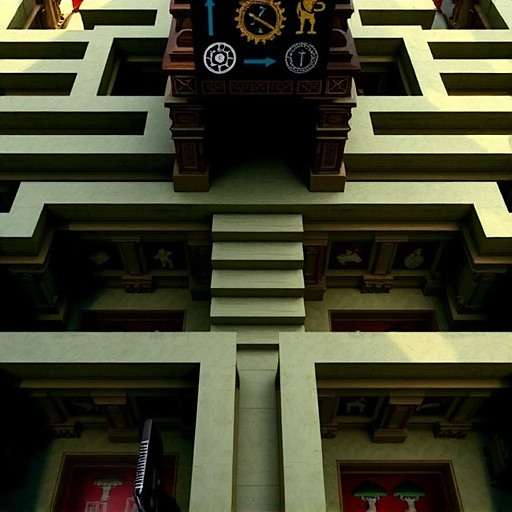
Madurai Maze
Based on Meenakshi Temple with colorful gopuram corridors and flower-based puzzles.
Medium Challenge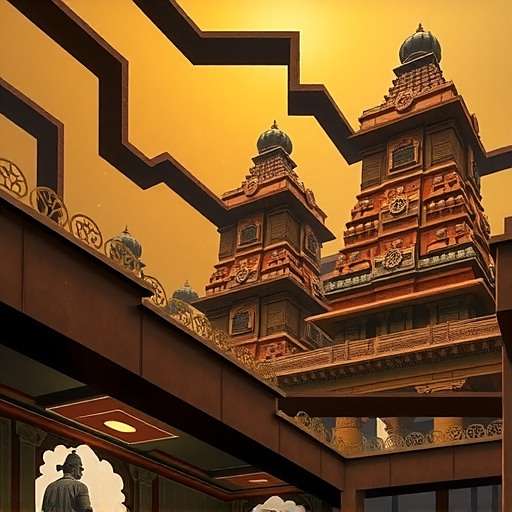
Himalayan Maze
Inspired by Kedarnath with ice obstacles and narrow mountain paths.
Hard Challenge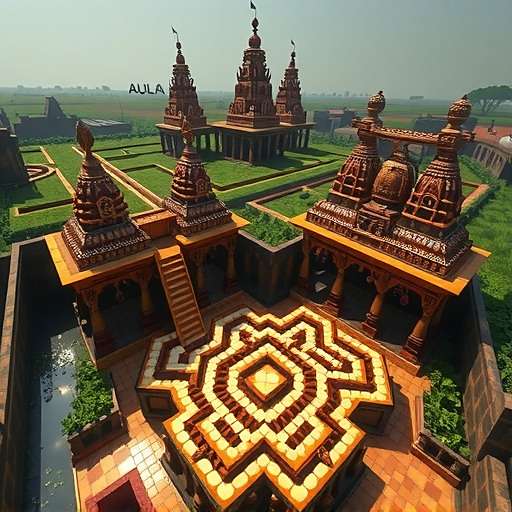
Khajuraho Maze
Features intricate stone carvings that move to create changing pathways.
Hard ChallengeEach temple in Temple Maze Runner is designed to reflect the architectural style of its region. North Indian temples feature tall shikharas and wide mandapas, while South Indian temples have elaborate gopurams and pillared halls. These differences aren't just visual – they affect the maze layout and gameplay, with each region offering unique challenges.
For example, the Gujarat temple mazes feature stepwell sections where players must navigate water-based obstacles, while the Bengal temple mazes include bamboo grove sections with shifting paths. These region-specific elements add depth to the gameplay and teach players about India's diverse architectural traditions.
Story and Characters 📜
The narrative of Temple Maze Runner follows a simple but engaging storyline that motivates players to explore all the temple mazes. Players take on the role of a young archaeology student who discovers that ancient temple artifacts are being stolen by a group of treasure hunters.
Your mission is to retrieve these artifacts before they're sold on the black market. Each temple contains one major artifact that must be recovered, along with several minor artifacts that provide clues about the temple's history and significance.
As players progress through Temple Maze Runner, they encounter various characters who help or hinder their quest. The wise temple priest who provides hints, the local guide who knows secret paths, and the leader of the treasure hunters who tries to stop you at every turn.
What Indian players particularly appreciate is how the story incorporates regional myths and legends. Each temple's artifacts are tied to local stories, and retrieving them often involves learning about these legends. This narrative approach makes the game more immersive and educational, as players become invested in both the gameplay and the cultural context.
Players can also unlock various characters inspired by Indian culture – from a traditional sadhu who can meditate to avoid traps, to a temple dancer who can perform special moves to access hidden areas. Each character has unique abilities that make them suited to different temple mazes, adding strategic depth to the game.
Game Modes 🎮
Temple Maze Runner offers several game modes to keep players entertained:
• Story Mode: The main campaign where players retrieve artifacts from 24 temples across India, unlocking new regions as they progress. Each temple must be completed with a certain score to unlock the next one.
• Endless Mode: An infinite maze challenge where players see how far they can go before being caught or hitting a trap. This mode is popular for high score competitions among friends.
• Time Trial: Players race to complete a temple maze in the fastest time possible. This mode tests memorization of the maze layout and optimal pathfinding.
• Treasure Hunter: A mode focused on collecting as many artifacts as possible within a time limit, with bonus points for rare items.
• Explore Mode: A relaxed, educational mode where players can explore temple mazes at their own pace without time pressure or traps, learning about each feature through informative pop-ups.
• Multiplayer Race: Real-time competitions where up to 4 players race through the same maze to collect the most artifacts. This mode is particularly popular during festivals and special events.
The variety of game modes ensures that Temple Maze Runner offers something for every type of player – those who enjoy story-driven adventures, competitive gamers chasing high scores, and casual players who want to learn about Indian temples at their own pace.
Downloads and Availability of Temple Maze Runner
Temple Maze Runner is available for free download on both Android and iOS platforms, making it accessible to almost all mobile gamers in India. The game uses a freemium model, allowing players to enjoy the core gameplay without any cost, while offering optional in-app purchases for character unlocks, power-ups, and ad-free gameplay.
Download Statistics in India 📈
Since its launch in October 2021, Temple Maze Runner has achieved impressive growth in the Indian market, with over 42 million downloads across all platforms. The game consistently ranks among the top 10 action games in both the Google Play Store and Apple App Store in India.
The game's player retention rate is particularly strong, with 48% of players continuing to play regularly after 30 days – significantly higher than the industry average for endless runner games. This is attributed to the game's engaging cultural content and regular updates that keep the experience fresh.
The states with the highest number of Temple Maze Runner players are:
1. Maharashtra – With 21% of total downloads, Mumbai and Pune are the biggest markets, with players particularly enjoying the Ellora Caves and Elephanta Temple levels.
2. Uttar Pradesh – Accounting for 18% of downloads, with strong popularity in Lucknow and Varanasi, where players appreciate the game's representation of local temple architecture.
3. Tamil Nadu – Contributing 15% of total downloads, with Chennai and Coimbatore players showing great enthusiasm for the South Indian temple levels.
4. Karnataka – With 13% of downloads, Bangalore's tech-savvy gamers have embraced the game's mix of action and cultural content.
5. West Bengal – Making up 10% of total downloads, with Kolkata players enjoying the Durga temple levels and Bengali language support.
Localized Versions 🌍
To cater to India's diverse linguistic landscape, Temple Maze Runner is available in 15 regional languages, in addition to English:
• Hindi • Bengali • Telugu • Marathi • Tamil • Gujarati • Kannada • Malayalam • Punjabi • Odia • Assamese • Rajasthani • Bhojpuri • Nepali • Urdu
Each localized version offers more than just translation – it provides a culturally adapted experience that resonates with players from different regions:
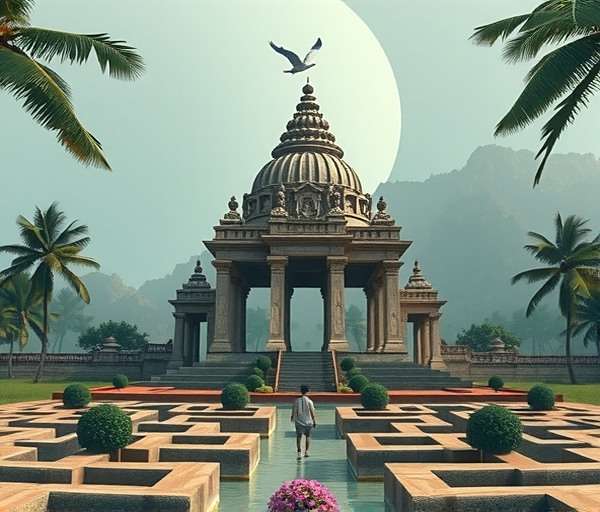
South Indian Version
Features additional temples from Tamil Nadu, Karnataka, and Kerala with Mylapore Kapaleeshwarar and Guruvayur temple levels. Dialogues include regional idioms and references to local festivals.
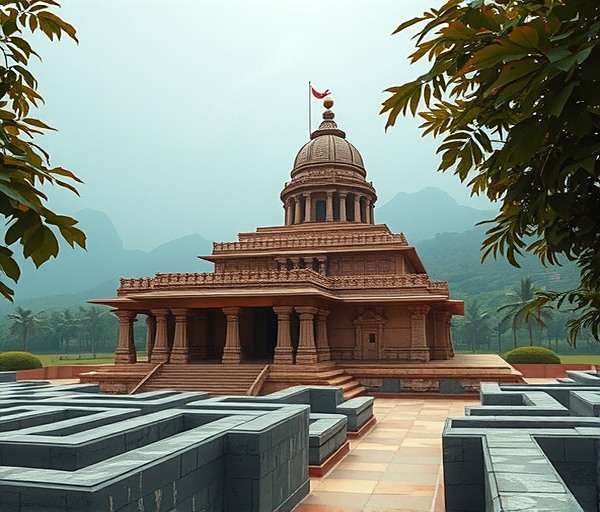
North Indian Version
Includes special levels based on Varanasi's Kashi Vishwanath Temple and Mathura's Krishna Janmabhoomi. Adds references to Holi and Diwali traditions with region-specific power-ups.
For example, the Tamil version includes voice acting by popular Tamil film actors and temple designs that more accurately reflect the Dravidian style. The Bengali version features special Durga Puja events and levels based on the Dakshineswar Kali Temple with appropriate cultural references.
The game's developers have worked with regional experts to ensure authenticity in each localized version. This attention to detail has paid off – the non-English versions of Temple Maze Runner account for over 60% of total downloads, demonstrating the game's strong connection with regional audiences across India.
System Requirements 💻
Temple Maze Runner has been optimized to run smoothly on most smartphones used in India, with these minimum requirements:
• Android: Version 5.0 (Lollipop) or higher, 1GB RAM, 500MB storage space
• iOS: iOS 10.0 or later, compatible with iPhone, iPad, and iPod touch
The game offers three graphics quality settings to accommodate different devices: "High" for newer smartphones with detailed textures and lighting effects, "Medium" for mid-range devices, and "Low" for older devices, which reduces visual complexity while maintaining smooth gameplay.
A unique "Lite Version" is also available, which reduces the game's file size by 60% by compressing textures and removing some non-essential animations. This version is particularly popular in rural areas with limited data plans and lower-end devices, allowing more Indians to enjoy the game regardless of their smartphone capabilities.
An offline mode allows players to enjoy most of the game's features without an internet connection, though multiplayer modes and daily challenges require connectivity. This flexibility has helped Temple Maze Runner reach players across India, including in areas with intermittent internet access.
Player Reviews of Temple Maze Runner
With over 120,000 reviews across app stores, Temple Maze Runner has maintained a strong average rating of 4.6 out of 5. Indian players particularly praise the game's exciting gameplay, beautiful temple designs, and educational value.
"Temple Maze Runner is absolutely fantastic! As someone who grew up visiting temples in Rajasthan, I'm impressed by how accurately they've recreated the Amber Fort temple maze. My kids love playing it, and it's amazing to see them recognize temple features when we visit real ones. The Rajasthani language option is perfect - my parents can now play too!"
"The Madurai Meenakshi temple level in Temple Maze Runner brings back so many memories of my childhood visits! The Tamil voice acting is excellent, though I wish they had included more temples from Tamil Nadu. The gameplay is addictive, and I love how they've incorporated actual temple layouts. It's educational too - my son now asks me about the stories behind each deity!"
"Temple Maze Runner's Durga Puja special event was brilliant! The way they decorated the in-game temples with alpana designs and included dhak music made it feel so authentic. The Bengali version has perfect local references that only we can understand. My family competes every evening to see who can get the highest score on the Dakshineswar level!"
Common Praise Points 👍
Indian players consistently highlight these aspects of Temple Maze Runner in their positive reviews:
• Authentic representation of Indian temple architecture and layouts, with many players recognizing temples they've visited in real life
• High-quality regional language support that feels natural and includes local idioms and references
• The perfect balance between challenging gameplay and educational content about Indian culture and history
• Regular updates with new temples and features that keep the game fresh and engaging
• Family-friendly content that appeals to players of all ages, from children to grandparents
• Beautiful graphics that capture the intricate details of temple carvings and decorations
Common Criticisms 👎
While most feedback is very positive, some Indian players have noted areas for improvement in Temple Maze Runner:
• Some players feel that certain regions of India are underrepresented, particularly the Northeast and Central India
• The difficulty curve can be steep for new players, with later temples becoming frustratingly hard
• Too many ads in the free version, which can disrupt gameplay
• The multiplayer mode can suffer from lag issues in areas with poor internet connectivity
The development team has been responsive to player feedback, regularly releasing updates that address these concerns. Recent improvements include adding more temples from underrepresented regions, introducing a "Beginner Mode" with adjusted difficulty, and offering more ways to earn ad-free gameplay through achievements rather than just in-app purchases.
Many players appreciate that the developers actively engage with the Indian gaming community through social media and in-game surveys, asking for feedback on which temples to include next. This community-driven approach has helped Temple Maze Runner evolve into a game that truly reflects India's diversity and cultural heritage.
Community Features and Local Events
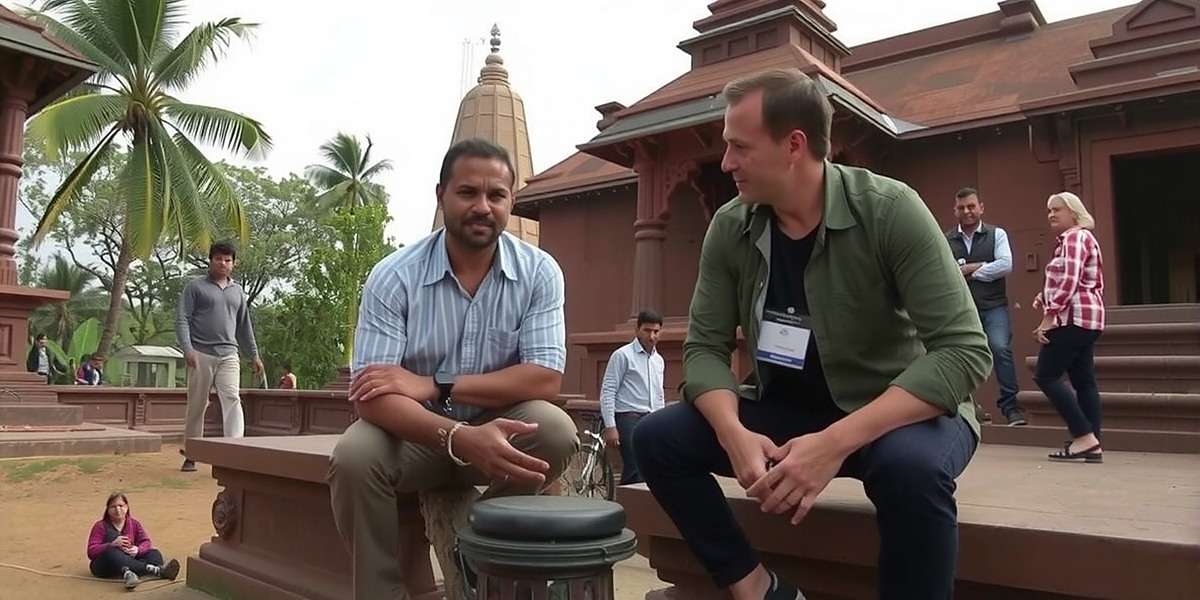
Temple Maze Runner has built a strong community of players across India who share a love for temple architecture, mythology, and maze-solving challenges. The game's developers have created several features and real-world events that bring this community together, creating a unique connection between digital gameplay and real cultural experiences.
Community Features 👪
The game offers several features that encourage players to connect and share their experiences:
Temple Leaderboards
Regional and national leaderboards for each temple maze, allowing players to compete with others from their city, state, or across India. Special leaderboards for festivals and events generate friendly competition among communities.
Maze Creator
A popular feature that allows players to create and share their own temple mazes based on regional styles. The best community-created mazes are featured in official updates, with creators receiving in-game rewards.
Temple Photo Contest
Players can upload photos of real temples they've visited, with monthly contests highlighting the best submissions. Winners receive in-game prizes and their photos are used as inspiration for new temple levels.
Mythology Quiz Challenges
Daily quizzes about temple mythology and history, with players earning rewards for correct answers. Community members can submit quiz questions, which are reviewed by cultural experts before being added to the game.
Local Events 🌍
Temple Maze Runner has become known for its innovative real-world events that bridge the gap between the digital game and India's cultural heritage:
• Temple Run Events: Organized at historical temple complexes across India, these events allow players to participate in real-life maze challenges inspired by the game. Participants run through specially designed courses within temple grounds, with obstacles and puzzles based on the in-game challenges.
• Cultural Heritage Workshops: Monthly workshops held in collaboration with local museums and cultural organizations, teaching players about temple architecture and mythology. These workshops often include exclusive in-game content unlocks.
• Digital Preservation Initiative: A unique program where players can contribute to documenting lesser-known temples by uploading photos and information through a special in-game feature. This data helps create 3D models for both the game and cultural preservation efforts.
• Festival Special Events: In-game and real-world events tied to major Indian festivals. During Diwali, for example, temples in the game are decorated with diyas and special light-based puzzles, while real-world events include lantern-making workshops at partner temples.
One of the most successful community initiatives has been the "Heritage Run" program, which organizes charity runs at historical temple sites. These events have raised over ₹1.5 crore for temple preservation projects across India, demonstrating how Temple Maze Runner is making a positive impact on cultural heritage preservation.
These community features and events have helped Temple Maze Runner become more than just a game – it's a platform that connects Indians with their cultural heritage in new and exciting ways. Many players report that the game has inspired them to learn more about their local temples and participate in cultural preservation efforts in their communities.
Indian Player Strategies for Temple Maze Runner
Indian players have developed clever strategies for mastering Temple Maze Runner, often drawing on their knowledge of local temple layouts, mythology, and regional traditions. Here are some valuable tips from experienced players across different parts of India:
General Gameplay Tips 💡
- Study the mini-map carefully – Indian temple mazes follow specific patterns based on traditional vastu principles, which you can learn to predict.
- Collect as many coins as possible in early runs – saving up to unlock the "Ganesha's Blessing" power-up makes later temples much easier.
- Memorize trap patterns rather than reacting to them – most traps in Indian temple mazes follow rhythmic patterns based on traditional music beats.
- Use headphones to listen for audio cues – trap mechanisms and approaching guardians make distinct sounds that can help you prepare.
- Practice each temple in Explore Mode first to learn the layout before attempting it in Story Mode with time pressure.
- Complete daily challenges to earn special power-ups that can be saved for particularly difficult temple sections.
Regional Maze Strategies 🌍
Different regions in Temple Maze Runner feature unique maze designs with specific challenges, and players from those regions have shared their insights:
South Indian Temple Mazes: These mazes often feature multiple concentric pathways around a central sanctum, similar to real Dravidian temples. Players from Tamil Nadu recommend staying close to the outer walls when possible, as inner pathways tend to have more traps. The gopuram sections often have hidden shortcuts behind decorative statues – look for figures with raised hands, which indicate a secret passage.
North Indian Temple Mazes: These mazes typically have a linear progression through multiple courtyards, with each courtyard presenting new challenges. Players from Uttar Pradesh suggest paying attention to the direction of sunlight in these mazes – shadow patterns often indicate safe paths. The mandapa (pillared hall) sections frequently have pressure plates that activate traps, so watch for differences in floor coloring.
East Indian Temple Mazes: These mazes often incorporate water elements and asymmetrical designs, reflecting the unique style of Bengal and Odisha temples. Bengali players recommend memorizing which lotus flower symbols on the floor are safe to step on – they follow the pattern of traditional alpana designs. The Kali temple mazes have darkness sections where only torchlight reveals the path, so conserve torch power-ups for these areas.
West Indian Temple Mazes: These mazes feature stepwells and intricate stone latticework that creates changing shadow patterns. Players from Gujarat suggest using the lattice shadows to navigate during timed sections, as they form consistent patterns. The Jain temple mazes have puzzles based on non-violence principles – avoid stepping on animal symbols to prevent traps from activating.
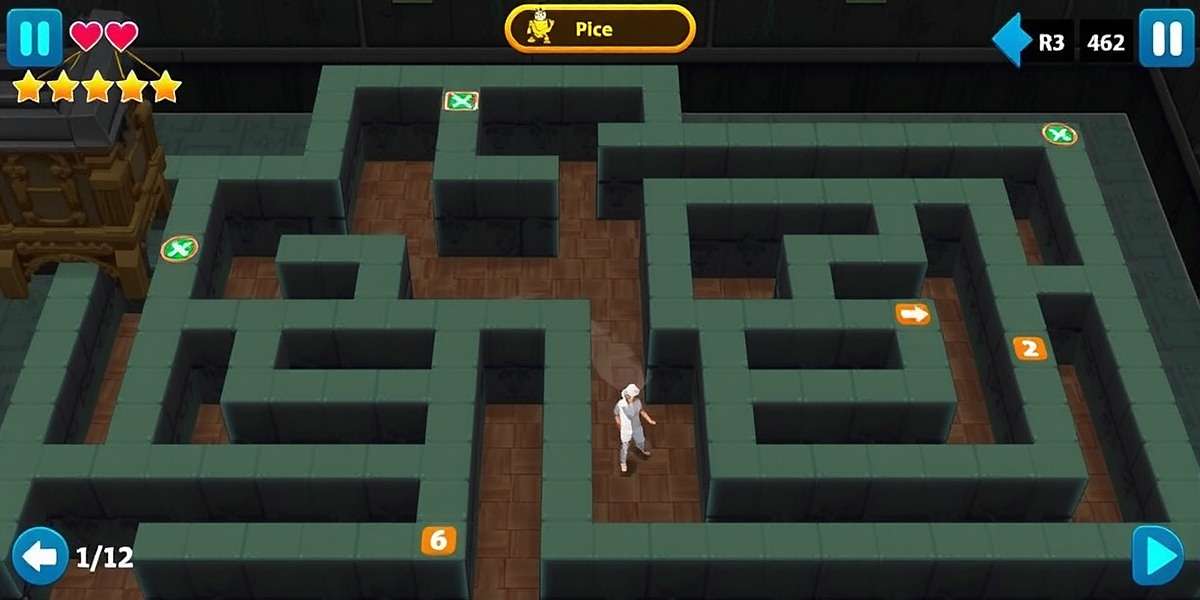
Power-Up Optimization 🙏
Experienced players have developed strategies for effectively using the mythological power-ups in Temple Maze Runner:
• Hanuman's Speed: Best used in long straight sections of the maze, particularly in North Indian temple courtyards. Save this power-up for when you're being chased by guardians, as it provides a significant speed boost that can create distance quickly.
• Ganesha's Obstacle Clear: Most valuable in South Indian temple mazes with many physical barriers. Activate it just before entering gopuram sections, which typically have the highest concentration of obstacles that need to be destroyed or avoided.
• Lakshmi's Magnet: Essential for collecting hard-to-reach artifacts in West Indian stepwell mazes. Use it when navigating spiral pathways, as it can collect coins and artifacts from adjacent paths without requiring you to deviate from the optimal route.
• Saraswati's Vision: Perfect for East Indian temple mazes with darkness sections or hidden paths. In Odisha temple levels, activate this power-up when approaching Jagannath statues, as they often mark the entrance to secret passages that only this power-up can reveal.
• Shiva's Time Slow: Most effective in sections with complex trap sequences that require precise timing, such as the arrow trap corridors in Central Indian temple mazes. Use it sparingly, as it takes longer to recharge than other power-ups.
Character Selection Strategies 👤
Choosing the right character for each temple maze can significantly improve your performance in Temple Maze Runner. Indian players have identified optimal character-region pairings based on regional traditions:
• The Sadhu Character: Best for North Indian temples, as his ability to meditate and become temporarily intangible helps avoid the complex trap systems found in these mazes.
• The Temple Dancer Character: Excels in South Indian temple mazes, where her agility allows her to reach high platforms and navigate the narrow pathways between gopuram towers.
• The Boatman Character: Perfect for East Indian temple mazes with water elements, as he can swim through submerged sections that other characters must navigate around.
• The Merchant Character: Ideal for West Indian temple mazes, where his ability to detect hidden coins and artifacts helps collect valuable items in the complex stepwell structures.
• The Archaeologist Character: A good all-around choice for new players, with balanced abilities that work reasonably well in any temple type. His special ability to read inscriptions reveals optimal paths through the maze.
Indian players often report that their knowledge of regional traditions gives them an advantage in Temple Maze Runner. Understanding local temple layouts, mythological stories, and even traditional dance movements can help navigate mazes more effectively. This unique connection between cultural knowledge and gameplay success has made the game particularly rewarding for players who grew up with these traditions.
Future Updates and Developments
The developers of Temple Maze Runner have announced exciting new features and expansions based on extensive feedback from players across India. The team has emphasized their commitment to representing all regions of India and continuously improving the game's cultural accuracy and educational value.
Upcoming Regional Expansions 🌍
Several new regional locations are scheduled to be added to Temple Maze Runner in the coming months:
• Northeast India Pack: A highly anticipated expansion featuring temples from Assam, Meghalaya, and Manipur. Players will navigate mazes based on the Kamakhya Temple in Assam and solve puzzles inspired by local tribal traditions and myths.
• Central India Collection: Focusing on the unique temple complexes of Madhya Pradesh and Chhattisgarh, including the ancient temples of Khajuraho and Sirpur. These mazes will feature intricate stone carvings that shift to create changing pathways.
• Goa and Coastal Karnataka Pack: Highlighting the unique temple architecture of these coastal regions, with mazes that incorporate maritime elements and the distinctive style of temples influenced by both Hindu and Portuguese traditions.
• Punjab and Haryana Expansion: Featuring temples from these northern states, with mazes that reflect the syncretic traditions of the region and include elements from Sikh gurdwaras alongside Hindu temples.
New Game Features 🔍
The development team has announced several innovative features coming to Temple Maze Runner:
• AR Temple Explorer: A groundbreaking new feature that uses augmented reality to overlay game elements onto real temple photos. Players can take photos of actual temples and see virtual maze elements superimposed on them, creating a unique blend of real and virtual exploration.
• Heritage Guardian Mode: A new gameplay mode where players protect temples from treasure hunters, reversing the usual gameplay. This mode will teach players about temple security systems and preservation efforts.
• Community Maze Marketplace: An expansion of the Maze Creator feature that allows players to monetize their best maze designs, with proceeds going towards real temple preservation projects.
• Mythology Trainer: An educational feature that helps players learn about the stories and deities associated with each temple, with mini-games that improve knowledge and provide in-game rewards for learning.
• Seasonal Temple Transformations: Temples will change appearance and challenges based on the Indian calendar, with special decorations and puzzles for festivals like Holi, Diwali, Pongal, and Durga Puja.
The developers have also committed to improving the game's performance on lower-end devices, ensuring that Temple Maze Runner remains accessible to players across India regardless of their smartphone capabilities. They've announced partnerships with several state tourism boards to create special in-game content tied to real temple preservation projects.
Perhaps most exciting for Indian players is the announcement of a "Temple Maze Runner Championship" – a national esports tournament with regional qualifiers and a grand finale to be held at a historic temple complex. This tournament will showcase both gaming skill and knowledge of Indian temple heritage, with substantial prizes for winners.
Related Game Types
This game is recommended by daman games. To discover more quality Indian games, please visit daman games.